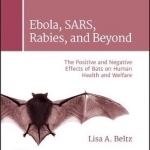The Intersection of Bats and Human Health and Welfare
BookThis item doesn’t have any media yet
2017 | Science & Mathematics
This book will examine the multifaceted interactions between bats and humans, and how each affects the other both positively and negatively. Dr. Beltz's approach to this title will include a more comprehensive, balanced take on bats' role in human health and welfare - she aims to not only present them as disease carriers, but will examine their positive contributions to human welfare from an ecological standpoint - bats pollinate valuable crops, and keep mosquito populations in check (subsequently limiting the spread of mosquito-borne disease like dengue, hemorrhagic and yellow fevers, malaria, and West nile and St. Louis virus encephalitis). Their guano is a key ingredient in fertilizer, and they also play a role in seed dispersal, which is key in restoring disturbed ecosystems. Human activity also impacts bat populations, both in terms of population and species distribution. By altering bat habitats and food sources, humans have displaced bat populations and decreased colony numbers and sizes. Climate change has negatively affected bat populations, as well as the creation and utilization of wind turbines as sources of alternative energy, by displacing bats from their habitats. The text itself is organized into seven sections, beginning with an introduction covering history and societal views on bats, descriptions of various groups of bats and their biology, etc. The second section will discuss different bat-borne diseases that affect human and other animal populations, including SARS, Ebola, and rabies. The third section delves into bats and human activity, and the fourth section relates bat activity to incidence of arboviral diseases. The fifth section shifts to man-made factors that influence bat populations, and the sixth focuses on bat-human interactions by geographical region. The final section summarizes the text and posits different ways in which beneficial interactions between bats and humans may be increased and harmful interactions minimized by encouraging proximity to bats.
Related Items:
| Published by | John Wiley & Sons Inc |
| Edition | Unknown |
| ISBN | 9781119150039 |
| Language | N/A |
Images And Data Courtesy Of: John Wiley & Sons Inc.
This content (including text, images, videos and other media) is published and used in accordance
with Fair Use.
